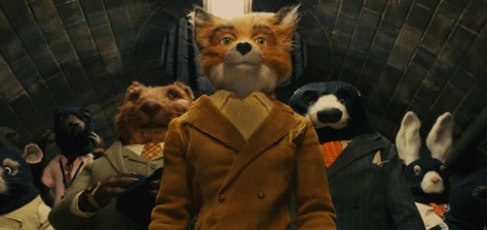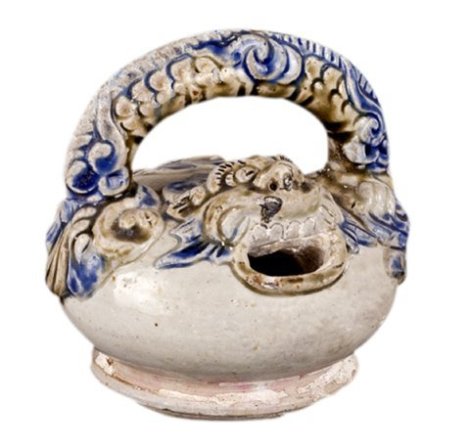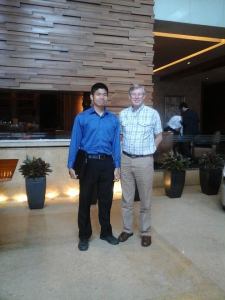By: Le Thao Vi – s3410135
“An old fox is not easily snared. Experience is the mother of wisdom. The longer you work at a place, the higher respect and position you will receive” (Manser, 2007).

Reproduced from Flix99, 2009.
Living in a culture valuing age and seniority like Vietnam, many old Vietnamese workers usually underestimate and disparage younger bosses due to their lack of life and work experience.
On the contrary, from the younger point of view, age does not always come with wisdom. Old workers seem to be incompetent to technology, afraid of changes and insufficiently flexible compare to younger employees (Munnel et al., 2006). This was closely reflected in a Vietnamese poem by Le Dat in 1956:
“Those who live a hundred years,
Just like a slaked lime pot.
The longer it lives the worse it is,
The longer it stays, the smaller it is”.

Reproduced from Baotangnhanhoc 2013
As a young manager in the future, it is inevitable for you to lead a team of old workers who are 40, 50, or even 60. However, the differences in opinions, attitude and experience between different groups might easily lead to disagreement, conflicts and consequently to distrust both in and outside organization (Galford & Drapeau, 2003). So, how could a young leader eliminate the arbitrariness of the old foxes and challenge the preconception about the lime-pot to attain agreement and harmony between two different generations within an organization? The answers will be found in this interview with Ms Nguyen Thi Huong Ly, the director of Vi Dai Phuong timber import and export company, which Ly officially inherited from her parents 2 years ago.
The encounter between two different ideas: the old fox and the lime-pot
Reaching such a high position at the age of only 28, the biggest challenge for Ly was to remove the obsolete perspective of the old fox and win trust from both employees and clients. Back in time to her first months in the role of the company’s head leader, Ly faced many difficulties in getting her decisions supported by the company’s old managers who are at her parents’ age. These people tried to put difficulties in Ly’s way by disregarding or rejecting her opinions and ideas. By contrast, these experienced employees in Ly’s eyes was not as good as they thought. In her opinion, age made them slow, out-of-date and consequently less effective in work.
“They once viewed me with great suspicion. And I saw this as a sign of envy since most of them are older than me but have to work under my supervision. However, it was obvious that they have lower education than me, so they have to accept to be the inferior”, said Ly.
These long-lasting conflicts resulted in two letters of resignation from two 25-year-experience employees and contract cancels from several long-term customers.
“Conservatism is a big obstacle in the march forward”

Reproduced from Hypervision, 2013
However, Ly’s opinion could not stay in her mind long when she saw a sharp decline in the company’s productivity resulted from the strained work relationship among administrators. Her father called Ly and they had a long conversation at that day. Although the old managers’ opposition towards her was not new to him, he was quite astonished at her conception of the lime-pot.
“Since the day my father gave Vi Dai Phuong to me, he has expected me to walk on my own foot. Therefore, he did not discuss with me much about what I should do or should not. He simply said: “Conservatism is a big obstacle in the march forward”, and wanted me to think about it”.
“This helped me to realize that it was my resistance to change that caused conflicts within the company and put it into this difficult situation”, told Ly.
This early failure brought about an evolution of her attitude about the old workers, as well as of her leadership career path.
“Trust starts with truth and ends with truth”
The old managers could not change the truth that Ly is the owner of Vi Dai Phuong, and similarly, Ly could not deny the truth that their age and experience easily make them trusted by other employees and clients. Therefore, she chose to rebuild trust in the company with truths.
“Inspired by the quote: ‘Trust starts with truth and ends with truth’. I wanted trust in my company to become truth which is real and unable to be changed”, shared Ly.
Ly firmly believed that the only way to change the ingrained perception of the old fox in the old workers’ mind is to abolish her attitude of the lime-pot. ‘Stealing’ their heart by opening her heart.
“If you want to make fast progress, you have to swallow your pride and eliminate your prejudge first. It is completely wrong when you walk into the office and yell out ‘fire’: “I am the boss here and everything needs my approval”. You are only respected by respecting others, based on direct and straightforward communication ” said Ly.
Free talk is not only about job, but it also demonstrates people’s attitude and characteristics. It will help a young manager to grasp the employees’ needs, understand their ability, and give them a chance to know more about him/her.
5 keys for young bosses to manage older staff
Usually, young managers are pretty ambitious and impatient to acquire achievement, but inexperienced and unaware of their specific circumstances. Thus, the following tips are provided to help you successfully break through age discrimination and rebuild trust in your organization:
– Break off the parent-child relationship:
A child cannot request his parents to complete task on time, or to judge and criticize them. Therefore, by accepting this kind of relationship, you cannot ask your old employees to work seriously and effectively. Do not treat them as your parents or the ‘big kids’, but as your colleagues.
– Abandon misleading perception of the previous generation
Not all the old workers are the same, and you need to spend time on understanding them to use them effectively. Usually talk with them, care about their outdated hobbies and assist them with technology, instead of criticizing their shortcomings in their ability.
– Learn to respect others
As a manager, you should adjust to the generational differences in social and cultural awareness and contribution to work, as well as to appreciate their opinions and working habits.
– Take off the hat ‘boss’
A knowledgeable leader will not be afraid of recognizing his/her colleagues’ capability. Old workers always have some valuable experience. Treasuring it, instead of wasting it. Questions and compliments can indicate your appreciation, which the workers always expect to obtain in the last period of their career.
– Willing to listen to others’ ideas and even advice.
Do not afraid to learn from others when they have something worth to be shared. Not only does this help you to show your respect to others, but it also a great chance for you to enhance your professional capacity.

Proof of life (Taken by the author)
Word count: 1160
Reference for content:
Galford, R. & Anne, S.D. 2003, The Enemies of Trust, Harvard Business Review, vol. 81, no. 2, pp. 88-95.
Manser, M.H. 2007, The Facts on File Dictionary of Proverbs, 1st edn, Infobase Publishing, America.
Munnel, A.H., Sass, S.A., & Soto, M. 2006, Employer Attitudes towards Older Workers: Survey Result, Center for Retirement Research, Boston Colledge, viewed 20 December 2013, < http://crr.bc.edu/wp-content/uploads/2006/07/wob_3.pdf>
Reference for images:
Baotangnhanhoc 2013, “Triển lãm làm sống lại văn hóa Trầu cau”, image, Bao Tang Nhan Hoc, viewed 30 December 2013, <http://baotangnhanhoc.org/vi/tin-tuc-su-kien/su-kien-noi-bat/1315-trin-lam-lam-sng-li-vn-hoa-tru-cau-.html>
Flix66, 2009, ‘Fantastic Mr. Fox (Blu-ray)’, image, Flixx66, viewed 30 December 2013, <http://flix66.com/fantastic-mr-fox-blu-ray/>
Hypervision, 2013, homepage, Hypervison, viewed 30 December 2013, <http://hypervision.nl/>
Bibliography:
Minda, Z. 1992, Young Managers Face a Generation Gap, Management Review, vol. 81, no. 2, pp. 10.
Starnes, B.J., Truhon, S.A. & McCarthy, V. 2010, A Primer on Organizational Trust, Human Development and Leadership Devision, pp. 1-15.
Westfield Wright Communication and Research, 2012, Attitudes to older workers, Westfield Wright Communication and Research, viewed 20 December 2013, < http://www.fsc.org.au/downloads/uploaded/2012_3001_older%20workers_report_4464.pdf>





























